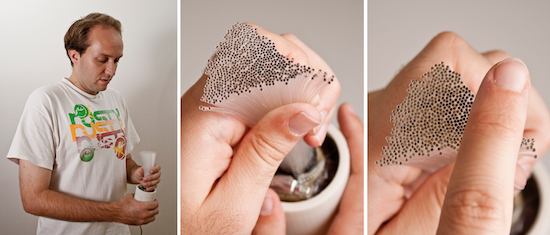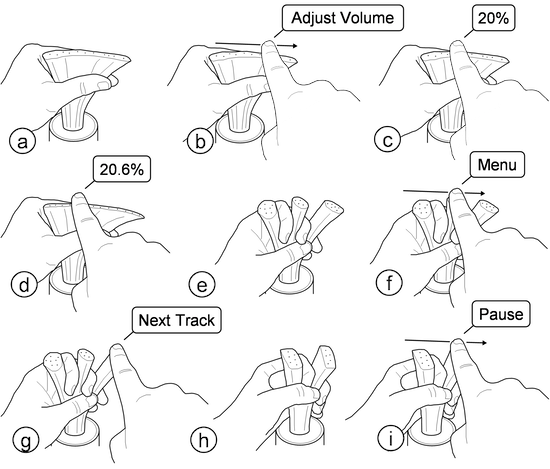Rock-Paper-Fibers
Rudeck, F. and Baudisch, P.

Abstract
We explore how to bring physical affordance to mobile touch devices. We present Rock-Paper-Fibers, a device that is functionally equivalent to a touchpad, yet that users can reshape so as to best match the interaction at hand. For efficiency, users interact bimanually: one hand reshapes the device and the other hand operates the resulting widget.
We present a prototype that achieves deformability using a bundle of optical fibers, demonstrate an audio player and a simple video game each featuring multiple widgets. We demonstrate how to support applications that require responsiveness by adding mechanical wedges and clamps.
The main idea behind Rock-Paper-Fibers is to allow users to obtain physical affordance by deforming the device.
Figure 1 shows our prototype, which consists of a bundle of optical fibers held together by a hand piece. The top ends of the optical fibers are touch-sensitive. Functionally, the device is therefore equivalent to a touchpad: it offers a two-dimensional array of touch-sensitive elements. Unlike a regular touchpad, however, each sensor element has been extended using an optical fiber. Since fibers can be bent, this allows users to deform the “touchpad” or break it apart into multiple touch-sensitive elements (e.g., Figure 2).

Video
Music: “Revolve” by His Boy Elroy (CC NC-Sampling+ 1.0) and “The Pudding” by cdk (CC BY-NC 2.5).
Publication
Rudeck, F. and Baudisch, P.
Rock-Paper-Fibers: Bringing Physical Affordance to Mobile Touch Devices.
In Proceedings of CHI 2012, Austin, TX, May 5-10, 2012, 4 pages (Note).
![]() paper (1,4 MB)
paper (1,4 MB) ![]() presentation (12,6 MB)
presentation (12,6 MB)